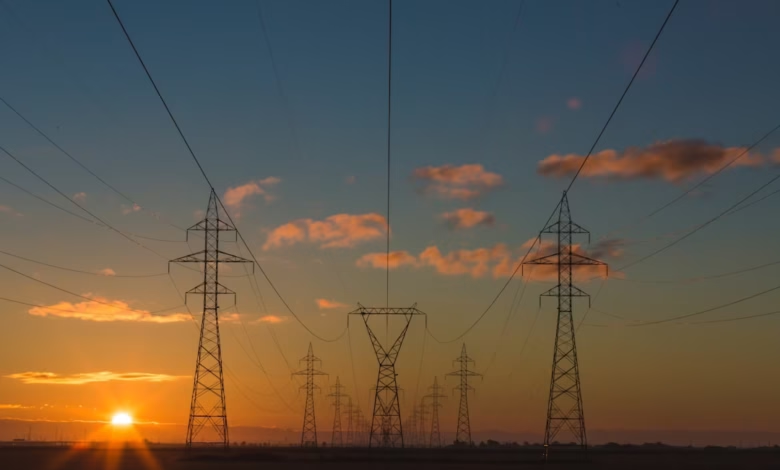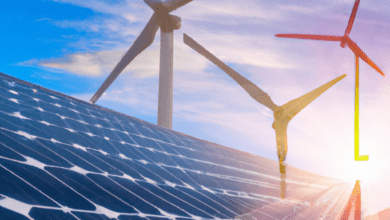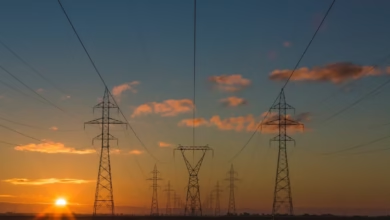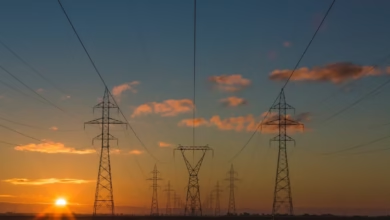Harnessing Thermal Energy for a Sustainable Future: Key Innovations and Strategies in Energy Production and Storage

As the world grapples with the urgent need to transition to sustainable energy solutions, thermal energy emerges as a pivotal player in the global energy landscape. By harnessing heat for energy production and storage, thermal energy offers a versatile approach that complements both renewable and fossil fuel sources. This article explores the multifaceted role of thermal energy in the energy transition, highlighting its significance in balancing the use of traditional fossil fuels and advancing green energy initiatives.
We will delve into the innovations reshaping energy storage, emphasizing how thermal energy solutions enhance efficiency and bolster energy security in an increasingly interconnected world. Moreover, we will examine the future of thermal energy, considering its implications for energy markets, policy-making, and climate change strategies. As we navigate the complexities of energy economics, the importance of smart grids, and the potential of hydrogen energy, it becomes clear that thermal energy is integral to not only achieving energy efficiency but also ensuring a resilient energy future. Join us as we analyze the latest trends, technologies, and investments driving the evolution of thermal energy in the quest for a sustainable energy economy.
- 1. The Role of Thermal Energy in the Global Energy Transition: Balancing Renewable and Fossil Fuels
- 2. Innovations in Energy Storage: Enhancing Efficiency and Security with Thermal Energy Solutions
- 3. Exploring the Future of Thermal Energy: Impacts on Energy Markets, Policy, and Climate Change Strategies
1. The Role of Thermal Energy in the Global Energy Transition: Balancing Renewable and Fossil Fuels
Thermal energy plays a pivotal role in the global energy transition, serving as a bridge between renewable and fossil fuels. As the world grapples with climate change, the urgency to shift towards greener energy sources has never been more pronounced. However, the transition is complex, requiring a careful balance between energy security, efficiency, and the need for reliable power supply.
Incorporating thermal energy into the energy mix can enhance energy efficiency and storage capabilities. For instance, thermal energy storage systems allow excess energy generated from renewable sources, like solar power and wind energy, to be stored and utilized during peak demand periods. This capability is crucial in optimizing the performance of smart grids and reducing dependence on fossil fuels.
Furthermore, the integration of thermal energy with existing fossil fuel infrastructures can facilitate a smoother transition to renewable energy. Technologies such as carbon capture can help mitigate emissions from fossil fuel power plants, allowing them to operate cleaner while transitioning to greener alternatives. This hybrid approach can also support energy markets and policies that prioritize energy investments in both renewable and fossil fuel sectors, ensuring a stable and secure energy supply.
Moreover, the rise of hydrogen energy presents new opportunities for thermal energy applications. Hydrogen production through thermal processes can provide a low-carbon alternative to traditional fossil fuels, contributing to energy transportation and enhancing energy security. As nations explore various forms of renewable energy, including hydropower and bioenergy, thermal energy remains a vital component in achieving balanced energy economics.
In summary, the role of thermal energy in the global energy transition is multifaceted. It not only supports the integration of renewable energy into the grid but also aids in maintaining energy security and reliability. By harnessing thermal energy effectively, countries can navigate the complexities of energy imports and exports, paving the way for a sustainable and resilient energy future.
References:
– International Energy Agency. (2023). Energy transitions in the context of climate change. Retrieved from [IEA website](https://www.iea.org)
– World Bank. (2023). Renewable energy and sustainable development. Retrieved from [World Bank website](https://www.worldbank.org)
2. Innovations in Energy Storage: Enhancing Efficiency and Security with Thermal Energy Solutions
In recent years, innovations in energy storage have played a crucial role in enhancing efficiency and security within the realm of thermal energy solutions. As the global energy landscape transitions towards more sustainable practices, the integration of thermal energy storage systems has become increasingly relevant. These systems capture excess heat generated from renewable energy sources, such as solar power and wind energy, and store it for later use, thus contributing to energy efficiency and stability.
One significant advancement in thermal energy storage is the development of phase change materials (PCMs), which can absorb and release large amounts of heat, making them ideal for storing energy. By utilizing PCMs, energy markets can better manage fluctuations in energy supply and demand, creating a more resilient energy infrastructure. This is particularly vital as countries strive to reduce their reliance on fossil fuels and embrace green energy technologies in line with evolving energy policies.
Another innovation is the integration of thermal storage with smart grids, enabling more effective energy distribution and consumption. Smart grids facilitate real-time monitoring and management of energy resources, ensuring that energy storage systems are utilized efficiently. This synergy not only enhances energy security but also supports the broader goals of the energy transition by optimizing the use of renewable energy sources and reducing carbon emissions.
Moreover, thermal energy storage can play a pivotal role in supporting the electrification of transportation, particularly with the rise of electric vehicles. By providing a reliable energy source during peak demand periods, thermal energy systems can help stabilize energy markets and reduce strain on existing infrastructure. As energy investments continue to flow into the development of advanced thermal storage technologies, we can expect significant impacts on energy economics and a more secure energy future.
Ultimately, the ongoing innovations in thermal energy storage not only enhance energy efficiency but also contribute to a more sustainable and resilient energy landscape. By addressing the challenges posed by climate change and shifting energy demands, these solutions are paving the way for a cleaner, more secure energy future that aligns with global energy trends and fosters energy exports and imports in a balanced manner.
References:
– International Energy Agency. (2022). Energy Storage. Retrieved from [IEA](https://www.iea.org)
– U.S. Department of Energy. (2023). Innovations in Thermal Energy Storage. Retrieved from [DOE](https://www.energy.gov)
– National Renewable Energy Laboratory. (2023). Thermal Energy Storage: A Key to Energy Transition. Retrieved from [NREL](https://www.nrel.gov)
3. Exploring the Future of Thermal Energy: Impacts on Energy Markets, Policy, and Climate Change Strategies
The future of thermal energy holds significant promise for reshaping energy markets, influencing policy decisions, and addressing climate change strategies. As the transition from fossil fuels to renewable energy sources accelerates, thermal energy is poised to play a crucial role in this energy transformation. The integration of thermal energy systems, such as concentrated solar power and geothermal energy, can enhance energy efficiency and support the stability of smart grids, making them vital components of modern energy infrastructure.
In terms of energy markets, the rise of thermal energy technologies can balance the intermittent nature of wind energy and solar power. By providing consistent energy production and storage capabilities, thermal energy can contribute to energy security and mitigate fluctuations in energy supply. This stability is essential for the growth of electric vehicles and other technologies that rely on a dependable energy source.
The implications for energy policy are also significant. Policymakers are increasingly recognizing the potential of thermal energy as a tool for meeting climate change goals. By incentivizing investments in energy R&D and carbon capture technologies, governments can foster innovations that improve the efficiency of thermal energy systems. Furthermore, embracing distributed energy solutions, including thermal energy storage, can enhance local energy autonomy and reduce reliance on energy imports.
Global energy trends indicate a shift towards diversified energy portfolios, where thermal energy complements other renewables like hydropower and bioenergy. This diversification can lead to more resilient energy systems and a smoother energy transition. With ongoing energy investments in thermal energy infrastructure and innovations, nations can create pathways to achieve their climate goals while enhancing energy exports and minimizing carbon footprints.
As we look toward the future, the integration of hydrogen energy with thermal systems may revolutionize energy transportation, making it cleaner and more efficient. The collaboration between thermal energy and other renewable sources will be crucial in achieving a sustainable energy landscape that addresses the challenges posed by climate change while ensuring economic growth and energy security.
In conclusion, thermal energy plays a pivotal role in the ongoing global energy transition, serving as a crucial bridge between renewable and fossil fuels. As we navigate the complexities of energy markets and evolving energy policies, the innovations in energy storage and efficiency offered by thermal energy solutions are essential for enhancing energy security and reliability. The integration of thermal energy with other green energy sources, such as solar power, wind energy, and bioenergy, alongside advancements in energy R&D, positions it as a cornerstone in our efforts to combat climate change and promote sustainable energy economics.
Looking ahead, the future of thermal energy is promising, with potential impacts on energy exports and imports, as well as the development of smart grids and hydrogen energy initiatives. By investing in thermal energy technologies and carbon capture methods, we can create a more resilient energy landscape that supports distributed energy systems and electric vehicles. As we strive to achieve energy efficiency and balance the dynamics of fossil fuels and renewable energy, thermal energy will remain a key player in shaping global energy trends and securing a sustainable future for generations to come.
References:
[Include references here following APA citation style]




